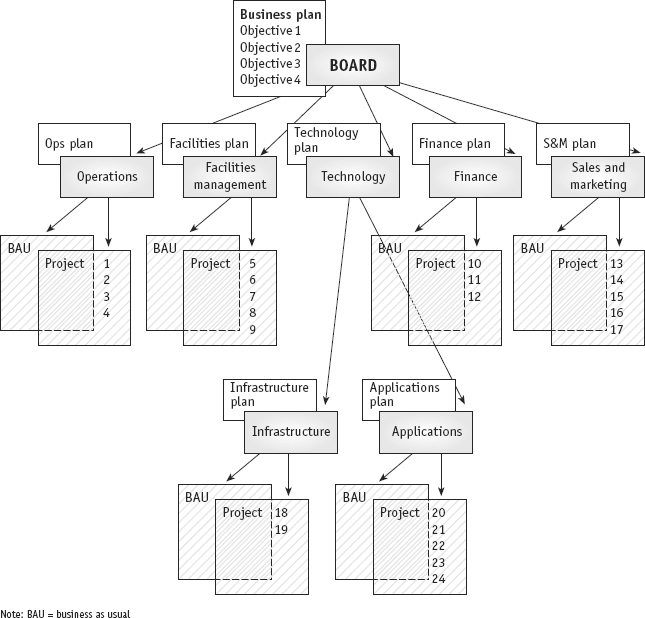Chapter 2
Conceiving and prioritising projects
WHERE DO PROJECTS COME FROM? Are they part of a master plan or a response to a challenge or a problem? Most organisations’ projects are a combination of both. Some companies prefer a selection of projects that suits their strategy; others prefer a mix that responds to their immediate operational needs; and many fall in between. In all cases, the lowest common denominator is a list of projects.
As the list lengthens, the implications for the way a company controls its projects grow. For instance, its structure may have to change in order to accommodate managing resources across several projects or it may have to become more flexible about setting priorities.
There are several ways of meeting the challenge of identifying projects.
Project identification by department
Figure 2.1 is an example of a company structure. The board oversees five directorates: operations; facilities management; technology; finance; sales and marketing. Technology is subdivided into infrastructure and applications.
2.1 A company structure

How a company identifies projects usually depends on its structure. In the example, the annual business plan starts with the board and cascades through the departments. Each layer of management looks at the plan from its own perspective, identifying activity for which it will be responsible and which will help achieve the board’s ...
Get Guide to Project Management: Getting it right and achieving lasting benefit, 2nd Edition now with the O’Reilly learning platform.
O’Reilly members experience books, live events, courses curated by job role, and more from O’Reilly and nearly 200 top publishers.

